Hungarian Lace
HUNGARIAN LACE Emese Kerkay LACE! To the woman of today it is a fine, flower-like material, in which there are parts left out, and in which holes and gaps are …
Hungarian Lace Read MoreAmerican Hungarian Museum – Amerikai Magyar Múzeum
American Hungarian Museum – Amerikai Magyar Múzeum
HUNGARIAN LACE Emese Kerkay LACE! To the woman of today it is a fine, flower-like material, in which there are parts left out, and in which holes and gaps are …
Hungarian Lace Read MoreHungarian Folk Musical Instruments Emese Kerkay INSTRUMENTAL MUSIC Kodály Zoltán wrote: „The Hungarians are not especially instrumental music-lovers. Even poor people rather listen to music, than play with their own …
Hungarian Folk Instruments Read MoreOrigin and History of the Hungarian Dress Emese Kerkay The culture and history of a nation can be deduced through its national and folk attire. The Hungarian national costume truly …
Magyar Dress / Attire Read MoreLYRE (koboz) It is an ancient Hungarian minstrel instrument of Central Asian origin. Minstrel song (énekmondás) is an inner process and there are persons in Hungary who still live and practice this form …
Lyre / koboz Read MoreOBOE-LIKE SHAWM, TURKISH PIPE (töröksíp) It has an oboe-like double-tongued pipe, and is made of maple. The töröksíp was probably made known to Hungarians by the Turks. However it is known to …
Turkish Pipe / töröksíp Read MoreSHEPHERD’S PIPE (tilinkó) It is a 70-80 cm long pipe made of willow bark, wood or metal. It has no openings. The different sounds are made with the tongue and with …
Shepherd’s Pipe / tilinkó Read More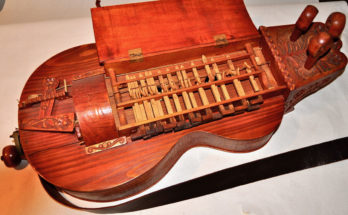
HURDY-GURDY, REVOLVING LUTE (tekerő) It was developed in the 13th century and spread from Spain. In Hungary it is mentioned and illustrated in the kuruc era (17th century) for the first time. The resonance …
Hurdy-Gurdy / tekerő Read More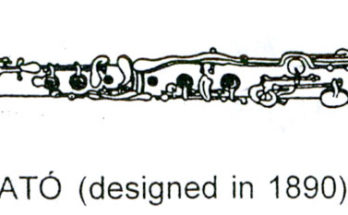
OBOE-LIKE SHAWM (tárogató) A Hungarian double reed instrument made of wood. It was used by the military as a signaling and guiding device. It was a favorite of Rákóczi’s freedom fighters (1703-1711). Therefore …
Shawm / tárogató Read More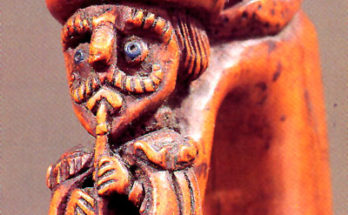
SHEPHERD’S PIPE (sípok) Pipes, together with drums, are ancient instruments recalling old beliefs of Hungarians. Pipes are made of reed, bone and wood. Their size and number of holes vary. Some …
Shepherd’s Pipe / sípok Read More
BUGLE, SHEPHERD’S HORN (kürt, pásztortülök) Ancient Hungarians used the horn as a signaling device and also as a symbol of dignity. The swineherd’s horn was made from the 80 cm long horn of …
Bugle / kürt Read MoreJUGHORN, JUGPIPE (köcsögduda) Leather or parchment is tightened to the top of a large pottery or wooden jug. A reed or horse hair is fastened to the cover. The one with …
Jughorn / köcsögduda Read MoreRATTLE (kereplő) The simple ripped rattle is made of three pieces of wood. It can be a toy, an instrument in a symphony orchestra and a tool to scare off the birds when …
Rattle / kereplő Read MoreCORN STALK VIOLIN (kukoricahegedű) It consists of two equally structured pieces: one is the violin, and the other is the bow. If the pieces are not completely dry, rubbed together they give a scraping …
Corn Stalk Violin / kukoricahegedű Read MoreSUNFLOWER STALK VIOLIN (kóróhegedű) The body is made of 40-50 cm long sunflower stalks, the two keys are a piece of twig, the bow is a bent rod, the strings and …
Sunflower Stalk Violin / kóróhegedű Read MoreVIOLIN (hegedű) The most popular and widespread instrument among Hungarians is the violin. It was made popular by the violinist minstrels in the Middle Ages. In the 1500-s, a traveler reports, …
Violin / hegedű Read More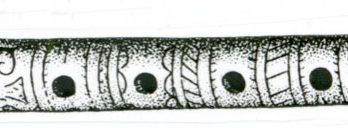
RECORDER, FLUTE (furulya) Two kinds of shepherd’s flutes or recorders are used: the long-woo dwind-flute (hosszú furugla), made of elderberry, is nearly one meter long and has five holes at the end. The …
Recorder / furulya Read MoreBAGPIPE, BELLOWS PIPE (duda) This ancient and significant instrument of the Hungarians has its origins in the Near East in antiquity. Up to the 16th century it was the military instrument …
Bagpipe / duda Read More
TRUMP, JAW HARP, JEW’S HARP (doromb) The Hungarians brought the ‘trump-song’ from Asia. The instrument can be found every where in the world. A narrow vibrating metal tongue is soldered to the lute-formed metal …
Trump / doromb Read MoreDRUM (dob) It was a significant instrument of the ancient Hungarians, symbolizing the universe. The single bottom drum is mentioned in many children’s rhymes which refer to our ancient beliefs. The double kettle drum used …
Drum / dob Read More
CYMBALOM, HAMMER-DULCIMER (cimbalom) This relative of the zither originated in 13th century Persia and became known in Hungary in the 16th century. The instrument is used to make dance music together with …
Cymbalom / cimbalom Read MoreZITHER (citera) The zither is the most widely used folk instrument since ancient times. Every herdsman and farmer was able to construct one. Anybody could learn to play it. There are …
Zither / citera Read More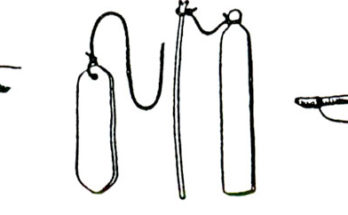
WHIZZER, THUNDERSTICK (búgattyú) The whizzer still plays a role in the ceremonies of nature peoples. A piece of wood or shingle is tied to a string and while twirled it makes …
Whizzer / búgattyú Read MoreBUSÓJÁRÁS An old tradition in Hungary By Oliver Valu The following piece is about traditional Hungarian folk customs, which are extremely fascinating, imaginative, and amusing, specifically: Hungarian carnival season …
Busójárás Read MoreScratch-carved egg The Scratch-carved eggs, dyed with onion skin, were decorated by Emese Kerkay Fotó: Kerkay László
Photos Read MoreHUNGARIAN FOLK PAINTING AND SCULPTURE Primitivism as an art form was discovered at the turn of the 20th century. The thinkers suddenly realized that there are values beyond antique and …
Folk Painting Read MoreWHY IS THE NEEDLE LACE OF KISKUNHALAS UNIQUE The world-famous Halas Lace is a 100% hand-made needle-lace. The delicacy of the fine thin-like-breath linen thread, and the effect created by …
Close ups Read MoreTHE GOLD OF KISKUNHALAS Kiskunhalas is located on the Hungarian Great Plain between the Tisza and Danube river. This large agrarian settlement endured much hardship during its history, before …
Halas Lace Read MoreFOLKART OF KALOTASZEG Kalotaszeg is a Hungarian folklore region located in Transylvania and consists of 34 villages. Hungarian Kalotaszeg was annexed to Rumania in 1920 (Peace Treaty of Trianon). The …
Folkart of Kalotaszeg Read MoreMATYÓ EMBROIDERY OF MEZŐKÖVESD Emese Kerkay In Hungary embroidery played a great part in the upbringing of every girl. It didn’t matter, if she lived in a castle or a …
Matyó Embroidery Read MoreHUNGARIAN EMBROIDERY Emese Kerkay The art of embroidery is thousands of years old. Textiles found in ancient graves were decorated with embroidery. Noblemen of Babylon and Assyria …
Hungarian Embroidery Read More